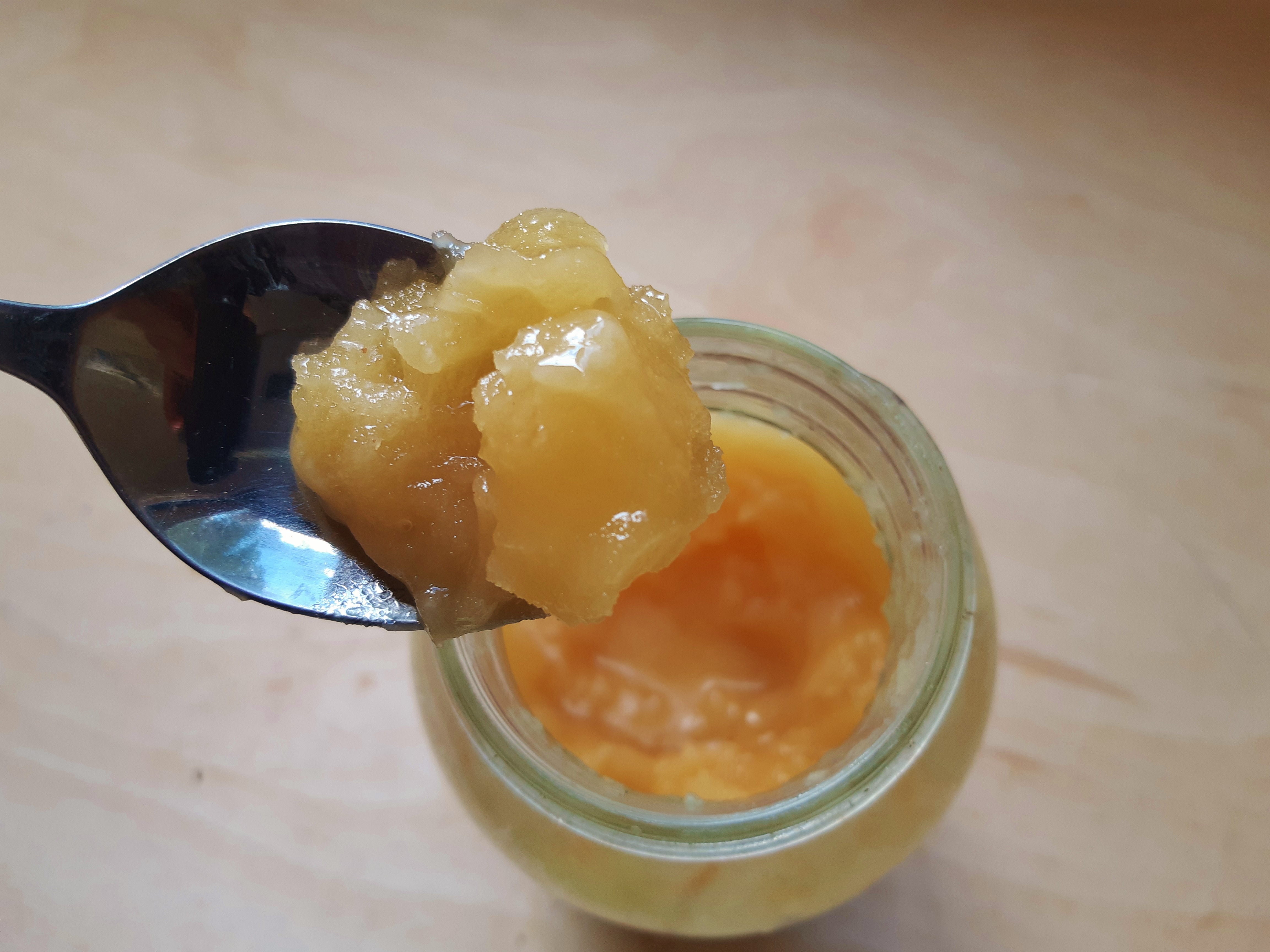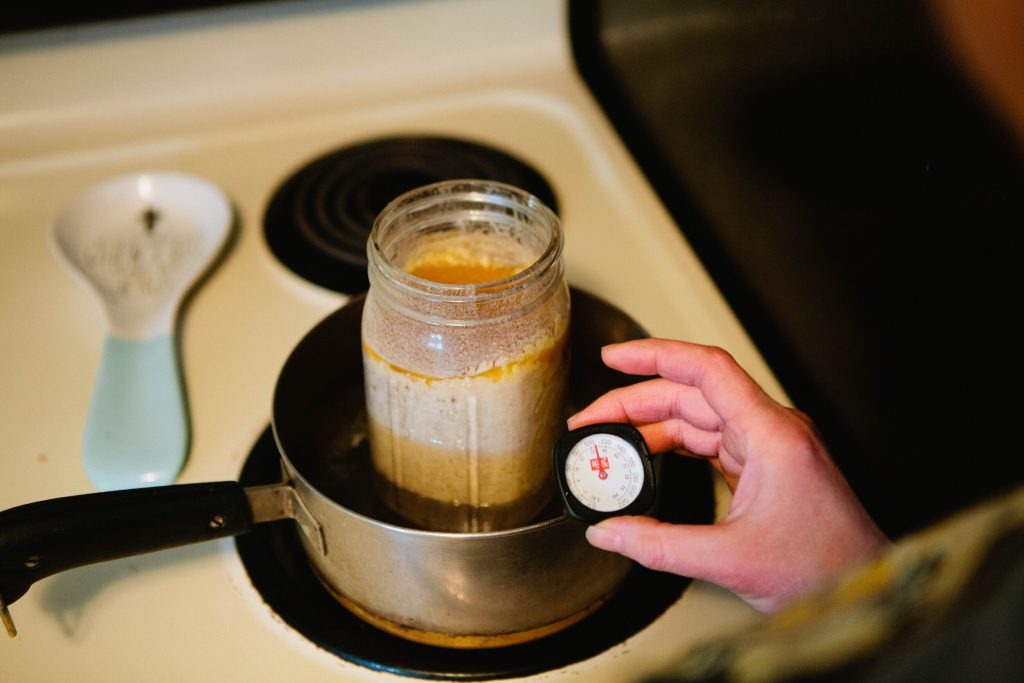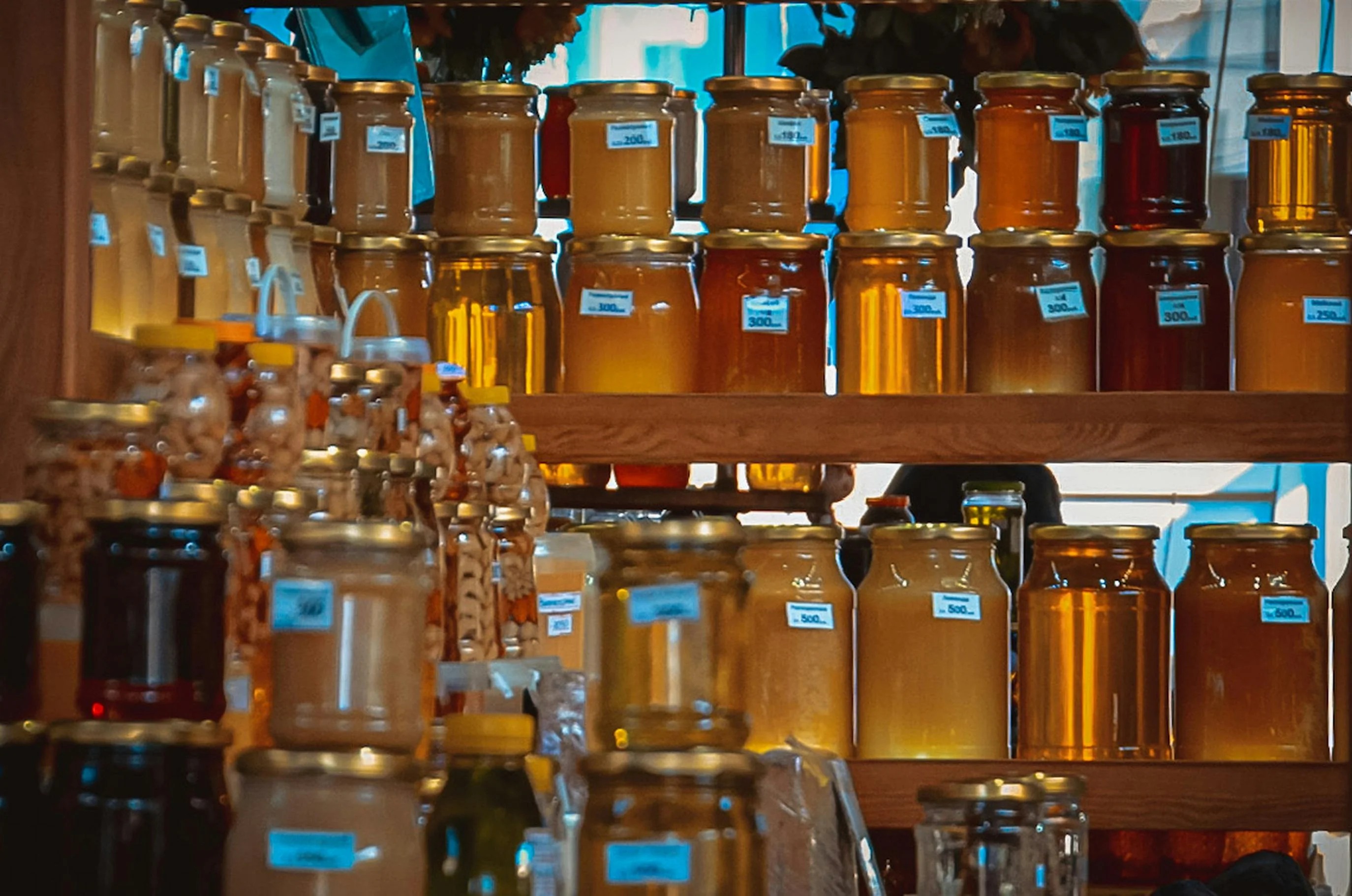The glass honey bottle is a classic choice for storing honey, thanks to its non-reactive nature and ability to preserve flavor. Yet, even in this ideal container, honey can gradually solidify over time. This crystallization is a natural occurrence, not a sign of spoilage, but it can be inconvenient when you need a smooth, liquid sweetener. Fortunately, gently warming the honey is the key. The challenge lies in doing it safely to avoid damaging the glass bottle or overheating the delicate honey. Here are five reliable techniques to gently soften your honey while keeping it and its container perfectly safe.
Table of Contents

Why Your Honey Crystallized (And Why It’s a Good Thing)
If you’ve ever reached for your jar of honey only to find it thick, cloudy, or grainy, you’re not alone. Crystallization is a natural process that happens to almost all pure honey over time—and it’s completely normal. In fact, it’s often a sign that your honey is high-quality and unprocessed. Let’s take a closer look at why it happens, what to expect, and why there’s no need to worry.
What Makes Honey Crystallize?
Honey is a supersaturated sugar solution, meaning it contains more sugar than the water in it can naturally dissolve. When glucose (one of the main sugars in honey) begins to separate and form crystals, the honey starts to solidify.
Several factors influence how quickly this occurs:
Sugar Composition: Honeys high in glucose (like clover or sunflower honey) tend to crystallize faster than those with more fructose (such as acacia or tupelo honey).
Temperature: Crystallization speeds up between 50–59°F (10–15°C). Storing honey at room temperature or cooler areas like a pantry can encourage the process.
Particles in Honey: Raw honey often contains tiny particles like pollen or beeswax, which provide a surface for crystals to form. Filtered honey may stay liquid longer.
Container Type: Glass jars tend to maintain temperature better than plastic, which can sometimes slow down crystallization.
Why Crystallized Honey Is Still Great
Crystallization does not mean your honey has gone bad. Thanks to its natural acidity and low moisture content, honey is naturally resistant to spoilage—even when solid.
Many people actually prefer crystallized honey for: Spreading on toast or biscuits, adding to warm beverages where it dissolves easily, using in baking for a thicker texture. In some regions, creamed honey—a controlled form of crystallized honey—is even sold as a specialty product for its smooth, spreadable consistency.
In short: crystallization is a natural, harmless process. It doesn’t affect the flavor, quality, or nutritional value of your honey. If you prefer it liquid, gentle warming can restore its flow—without any loss of goodness.
Method 1: The Warm Water Bath

The warm water bath is often the go-to method for softening honey. It’s a gentle, controlled approach that effectively liquefies crystallized honey while preserving its delicate flavors and natural enzymes.
Simple Steps to Follow
Prepare the Bath: Place your sealed glass honey bottle in a bowl or saucepan. Heat water to an ideal temperature of 95–110°F (35–43°C).
Submerge the Jar: Pour the warm water into the bowl, ensuring the water level is equal to the level of the honey inside the jar. Be careful not to submerge the lid to prevent water from seeping in.
Wait and Occasionally Stir: Let the jar sit for 15 to 60 minutes. Gently stirring the honey every 15 minutes helps distribute the heat and speed up the process. The total time will depend on how solid the honey has become.
Check and Repeat if Needed: Once softened, remove the jar, dry it off, and give the honey a good stir. If some crystals remain, you can repeat the process with fresh warm water.
Why Temperature is Key
Controlling the water temperature is the most important part of this method.
The Safe Zone: Keeping the water between 95–110°F (35–43°C) protects the honey’s beneficial compounds.
What to Avoid: Water that is too hot can degrade the honey’s quality, diminishing its flavor and nutritional value. Using a kitchen thermometer is highly recommended for accuracy.
Glass is Best: This method is most effective and safest with glass bottles. If your honey is in plastic, consider transferring it to a Glass Jar before softening.
This gentle warming technique is a reliable way to return your honey to a liquid state without compromising what makes it special.
Method 2: The Sous Vide Method for Precision Heating
For those who own a sous vide cooker, it offers the ultimate control for softening honey. This method eliminates guesswork, maintaining a perfectly steady, low temperature that gently liquefies crystals while fully preserving the honey’s quality.
How to Use Your Sous Vide
Set the Temperature: Fill your sous vide container with water and set the temperature to a safe range between 95°F and 110°F (35°C to 43°C).
Prepare the Jar: Ensure the lid on your glass honey bottle is tightly closed. This is crucial to prevent any water from entering the jar.
Start the Bath: Once the water has reached the target temperature, place the jar in the water bath. The water level should be above the honey line but below the lid.
Allow Time to Soften: Let the jar sit in the water bath. A standard 16-ounce (1 lb) jar may take 1-2 hours to become fully liquid, while larger jars could take 3 hours or more. Gently swirling the jar every hour can help distribute heat evenly.
Why This Method is So Effective
Perfect Control: A sous vide circulator keeps the water temperature within a very narrow range, guaranteeing that the honey never overheats. This is the best way to protect delicate enzymes and flavors.
Hands-Off and Safe: Unlike a stove-top water bath that needs monitoring, the sous vide does the work for you. There’s no risk of accidental overheating or caramelization.
Ideal for Multiple Jars: This method is perfect for softening several jars at once, ensuring they all receive the same gentle treatment.
Glass Only: Always use a glass bottle for this method, as plastic may not be suitable for warming.
The sous vide method is an excellent, worry-free option for honey enthusiasts who want to maintain the absolute highest quality of their honey when softening it.
Method 3: Using a Slow Cooker on the ‘Warm’ Setting
A slow cooker provides a convenient, “set-it-and-forget-it” approach to softening honey. Using the ‘Warm’ setting creates a gentle, consistent heat that is ideal for the task.
Simple Steps to Follow
Add Water: Pour a few inches of warm (not hot) water into the slow cooker’s base. Starting with water around 95°F (35°C) can speed up the process.
Set to ‘Warm’: Turn the slow cooker only to the ‘Warm’ setting. The ‘Low’ or ‘High’ settings will get too hot and can damage the honey or risk cracking the glass jar.
Place the Jar: Put the sealed glass honey bottle upright in the water. The water level outside should match the honey level inside for even warming.
Wait Patiently: Leave the jar for 2-4 hours. The time will vary based on the amount and solidity of the honey. The low heat will gradually liquefy the crystals without harming the honey’s natural properties.
The slow cooker method is a great option for those who want a simple, low-effort way to gently return their honey to a liquid state.
Method 4: Using Gentle Radiant Heat (Heating Pad)
This method offers a unique “dry” approach to softening honey. By using a food-safe heating pad or a specialized bee blanket, you can apply gentle, consistent heat without any water, which is ideal for preserving the honey’s pure flavor and texture.
How to Apply Gentle Heat
Wrap the Jar: Securely wrap a food-grade heating pad around your glass honey bottle. Ensure the device is clean and intended for food-related use.
Set a Low Temperature: Turn the pad to its lowest setting, ideally aiming for a range between 95°F–110°F (35°C–43°C). For maximum quality preservation, keeping it at or below 100°F (38°C) is best.
Allow Time to Soften: Let the jar sit for 1-2 hours. For even results, occasionally rotate the bottle to distribute the heat.
Why This Method Works Well
Dry and Direct: This technique avoids water entirely, providing a gentle, radiant heat that minimizes the risk of introducing moisture or air into the honey.
Even Warming: When wrapped properly, the heat is distributed evenly around the jar, preventing hot spots.
Scalable: While a standard heating pad works for home jars, beekeepers often use larger “bee blankets” to gently warm 5-gallon pails, maintaining the same low-temperature principle.
Perfect for Purity: This method is favored by many for keeping the honey’s aroma and texture intact, as it doesn’t involve submersion in water.
Using gentle radiant heat is an efficient, clean alternative for anyone looking to soften honey with precise control and no mess.
Method 5: Using Sunlight for Natural Warming
For a completely natural and energy-free approach, sunlight can be an effective way to soften honey. This method leverages ambient heat, making it an easy, eco-friendly option—though it requires a sunny day and careful monitoring.
The Simple Process
Choose a Warm Location: A car interior on a sunny day is often the most effective spot. The enclosed space acts like a greenhouse, quickly building up warmth. A very sunny windowsill can also work, though it may take longer.
Protect the Jar: Place the sealed glass honey bottle in a spot that is warm but out of direct sunlight, such as on the car floorboard or shaded by a cloth. This prevents localized overheating from direct rays.
Check Regularly: The softening process can take 1 to 4 hours for a standard jar. It’s crucial to check the honey periodically and feel the jar’s temperature. If the glass becomes too hot to touch comfortably, it’s a sign the temperature is too high.
Key Advantages & Considerations
Pros: This method uses no electricity and is incredibly simple. There’s no risk of water getting into the honey.
Cons: It is entirely weather-dependent and offers the least control over temperature. On a hot day, car interiors can easily exceed 140°F (60°C), which can damage the honey.
The biggest risk is overheating. To protect the honey’s delicate properties, the temperature should stay below 110°F (43°C) for optimal quality, and must never exceed 140°F (60°C). Always shield the jar from direct sun and monitor it closely.
Sunlight warming is a viable, passive method for those who are not in a hurry and can keep a close eye on the process.

Why Glass Bottles Are Ideal for Honey
When it comes to storing honey, glass is widely considered the superior choice. Its non-porous and inert nature ensures that honey’s delicate flavor and quality are preserved exactly as intended, without any interference from the container itself.
Key Advantages of Glass
Purity of Flavor: Glass acts as a perfect barrier, preventing the transfer of odors or flavors. This means the honey’s unique taste and aroma—especially important for raw or single-origin varieties—remain uncompromised.
Food Safety: Being chemically inert, glass does not interact with honey. There is no risk of chemicals leaching into the product, guaranteeing a pure and safe food experience.
Preservation: Most glass jars come with airtight lids that effectively seal out moisture and air, helping to maintain honey’s quality over time.
Durability and Clarity: Glass is resistant to scratching and staining, and it doesn’t become cloudy with use. Its transparent nature allows you to easily appreciate the honey’s color and consistency.
Aesthetic and Perceived Value: glass packaging often conveys a sense of premium quality and purity, making it a favorite for gourmet, medicinal, and gift-grade honey products.
Feature | Glass Honey Jars | Plastic Honey Jars |
|---|---|---|
Food Safety | Safe, you can see the honey | Might leak chemicals, not always clear |
Durability | Scratch-resistant, lasts long | Less durable, scratches easily |
Environmental Impact | 100% recyclable, reusable | Harder to recycle |
Cost | More expensive | Less expensive |
Weight | Heavier | Lighter |
Quality Preservation | Excellent | Can get worse |
Aesthetic Appeal | Looks high-quality, gift-ready | Looks basic, less attractive |
Environmental Consideration
Glass is 100% recyclable without loss of quality, and jars can be repurposed countless times at home, aligning with sustainable values. The main considerations with glass are its weight, which can increase shipping costs, and its fragility compared to plastic. However, with proper handling, these are often outweighed by the significant benefits for honey preservation. For anyone prioritizing taste, purity, and sustainability, glass remains the recommended container for honey.
A Final Word on Softening Honey & Choosing the Right Container
Gently warming crystallized honey is a simple process that, when done correctly, preserves all the natural goodness your honey has to offer. Whether you choose a warm water bath, a slow cooker, or any of the other safe methods, the key is always patience and low, controlled heat.
The right glass bottle is just as important as the right technique. A high-quality container protects the honey’s flavor, ensures its purity, and makes the softening process safer and more effective. At TP Glass Bottle Manufacturer, we specialize in crafting premium, food-safe glass jars designed specifically for honey and other delicate foods. Our bottles are made to preserve quality, withstand temperature changes, and showcase your product beautifully.

